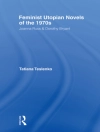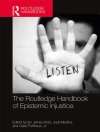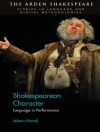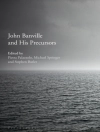Animals and Science Fiction is the first edited collection to be published focusing on the intersection of animal studies and science fiction studies. It offers a broad range of theoretical approaches and primary source texts—including novels, short stories, poetry, film and TV, photography, erotica, video games, and urban planning documents—that explore the ways works of science fiction can transform how we see and interact with nonhuman others. With an eye toward more just multispecies futures, it argues that speculative imaginaries can be pivotal in changing attitudes toward and understandings of nonhuman animals in our world today. Chapters appeal to those interested in biopolitics, posthumanism, new materialism, ecocriticism and the environmental humanities, ocean humanities, postcolonial studies, critical race studies, Indigenous studies, global sf studies, film studies, and food studies. Taken together, the collection works to showcase a diverse and growing field ofscholarly inquiry into animals and science fiction.
Tabla de materias
Chapter 1. “Introduction: Reading the Speculative Animal”.- Chapter 2. From Animal Alterity to Animal Studies and SF Today: A Conversation with Sherryl Vint.- Chapter 3. “Safe in each other’s scaly arms”: Solace, Oddkinship, and the Third Position in African Speculative Texts.- Chapter 4. Playing the Animal: Imagining the Nonhuman Animal in 2-Dimensional Action and Adventure Games.- Chapter 5. Philip K. Dick’s Dr. Bloodmoney and the Species Politics of Risk.- Chapter 6. Listening to Nonhuman Animals in Science Fiction Film: Establishing Empathy through Dinosaur Voices in Jurassic World: Fallen Kingdom.- Chapter 7. “Muzzle for the Queen”: Settler-Nonhuman Entanglements in Australian Speculative Ecofiction.- Chapter 8. Reading the Speaking Animal: Biotechnology and Animal “Uplift” in Adam Roberts’s Bête.- Chapter 9. Spacefaring Animals and Their Humans: A Study in Extraction, Exploitation, and Co-Evolution.- Chapter 10. To “Jump” into an Animal’s Body: Empathy, Care, and Res Extendas in Emma Geen’s The Many Selves of Katherine North.- Chapter 11. “alien guest, courting the goodwill of a demonic microbe”: Living Poetry, NHAs and “Aliens Among Us” in Christian Bök’s The Xenotext: Book 1.- Chapter 12. Disemboweling the Hyperreal in Bong Joon-ho’s Okja.- Chapter 13. A Change of Heart: Animality, Power, and Black Posthuman Enhancement in Malorie Blackman’s Pig-Heart Boy.- Chapter 14. Africanfuturist Assemblages of the Undersea in Nnedi Okorafor’s Lagoon.- Chapter 15. To Build a World: The Return of Biota in Thomas King’s The Back of the Turtle.- Chapter 16. A Multispecies Right to the City? Reimagining the Speculative Narratives of Urban Sustainability.- Chapter 17. Divination with Digital Animals: Sci-fi Realism in Jia Zhangke’s Tian Zhuding (A Touch of Sin).- Chapter 18. “The Face of Extinction”: On Haunted Futures with Machine Animals.- Chapter 19. Mesozoic Miscegenation: Erotic Fiction’s Resurrection of Dinosaurs.- Chapter 20. A “speculation built on fact”: On Dougal Dixon’s Zoology of the Future.
Sobre el autor
Nora Castle is an IAS Early Career Fellow at the University of Warwick. She recently completed her Ph D, entitled, “Food Futures: Food, Foodways, and Environmental Crisis in Contemporary Science Fiction, ” which explored the future of food in/as science fiction through meat, plants, kitchens, and farms as thematic streams.
Giulia Champion is a Research Fellow (Anniversary Fellowship) at the University of Southampton. Her project investigates different communities’ engagement with and representations of the seabed through culture, science communication and international policy. It interrogates how these may influence marine governance, multispecies relations and Environmental and Ocean Justice.












